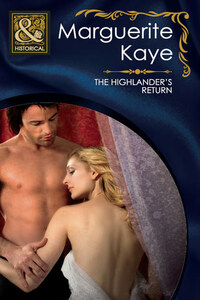William Collins
An imprint of HarperCollinsPublishers
1 London Bridge Street
London SE1 9GF
www.WilliamCollinsBooks.com
This eBook first published in Great Britain by William Collins in 2017
Copyright © Thomas Williams 2017
Thomas Williams asserts the moral right to be identified as the author of this work
A catalogue record for this book is available from the British Library
Cover illustration by Joe McLaren
Maps by Martin Brown
All rights reserved under International and Pan-American Copyright Conventions. By payment of the required fees, you have been granted the non-exclusive, non-transferable right to access and read the text of this e-book on-screen. No part of this text may be reproduced, transmitted, down-loaded, decompiled, reverse engineered, or stored in or introduced into any information storage and retrieval system, in any form or by any means, whether electronic or mechanical, now known or hereinafter invented, without the express written permission of HarperCollins.
Source ISBN: 9780008171933
Ebook Edition © September 2017 ISBN: 9780008171940
Version: 2018-06-25
Storms break on stone-strewn slopes,
Snows falling, the ground enfettered,
the howling of winter. Then darkness awakens,
deepens the night-shadow, sends from the north
a harsh hail-harrying bringing terror to men.
The Wanderer (tenth century)1
In 2013–14 I was the project curator for the exhibition Vikings: Life and Legend at the British Museum. One of the first reviews, published in a major national newspaper, offered the following critique:
There’s no stage-setting. No gory recreation of the Lindisfarne raid, say, to get us in the mood […] I felt like crying. Where were the swords? And if I was ready to bawl, what does this exhibition offer its younger visitors? It can’t claim not to be for them. You can’t put on an exhibition called Vikings without expecting some kids. The only way this exhibition could sound more child-friendly would be if it was called Vikings and Dinosaurs. But the austerely beautiful cases of brooches and golden rings and amber offer very little to fans of Horrible Histories.1
Leaving aside the issue of whether sensationalizing historical violence for the entertainment of children is ever appropriate (how about a ‘gory recreation’ of the Srebrenica massacre?), what these comments really reveal is an uncritical assumption that the Vikings have their proper place as players in a hilarious historical Grand Guignol, alongside head-chopping at the Tower of London. The Vikings, it seems to say, are a cheerful, bloody diversion for the kids on a wet bank-holiday afternoon, not a proper historical phenomenon. The indignation that springs from not having had these prejudices confirmed is palpable. Brooches? Women? Trade? BORING! Vikings are big men with swords, crushing skulls left, right and centre: the barbarian archetype writ large and red.
It occurred to me at the time that nobody would treat Roman history in this way. It is unthinkable, for example, that any art critic would yearn for lurid re-enactments of Roman soldiers cheerfully raping and murdering British women and children – least of all within the austere neo-classical precincts of the British Museum. The Romans, it is instinctively felt, are refined, have gravitas. They benefit from a cultural snobbery with extraordinarily deep roots (ultimately fastened in the smug imperial propaganda of the Romans themselves). Roman Britain, in particular, is widely presented in a solidly respectable way – epitomized in tiresome tropes of roof tiles and under-floor heating, good roads and urban planning, fine wine and fancy tableware. It is a period that can serve as an acceptable backstory to who we are and where we come from, a people ‘just like us’, who went to parties and wrote letters and had jobs. Romanitas – Romanness – means ‘civilization’.
Few think of the age of the Vikings in those terms. Like other romantic curios they have been fetishized and infantilized, set apart from wider history alongside pirates, gladiators, knights-in-armour and, I suppose, dinosaurs. The Vikings are presented as cartoon savages who had a short-lived cameo rampaging around in the gloomy interlude between the end of Roman Britain and the Norman Conquest. It does them a grave disservice.
Between the conventional beginning of the Viking Age in the late eighth century and its close in the eleventh, Scandinavian people and culture were involved with Britain to a degree that left a permanent impression on these islands. They came to trade and plunder and, ultimately, to settle, to colonize and to rule. It is a story of often epic proportions, thronged with characters whose names and deeds still fire the blood and stir the imagination – Svein Forkbeard and Edmund Ironside, Ivar the Boneless and Alfred the Great, Erik Bloodaxe and Edgar the Pacifier – a story of war and upheaval. It is also, however, the story of how the people of the British Isles came to reorient themselves in a new and interconnected world, where new technologies for travel and communication brought ideas and customs into sometimes explosive contact, but which also fostered the development of towns and trade, forged new identities and gave birth to England and Scotland as unified nations for the first time. By the time of the Norman Conquest, most of Britain might justifiably be described as ‘Viking’ to varying degrees, and in language, literature, place-names and folklore the presence of Scandinavian settlers can still be felt throughout the British Isles, with repercussions for all those places that British culture and colonization have subsequently touched.














